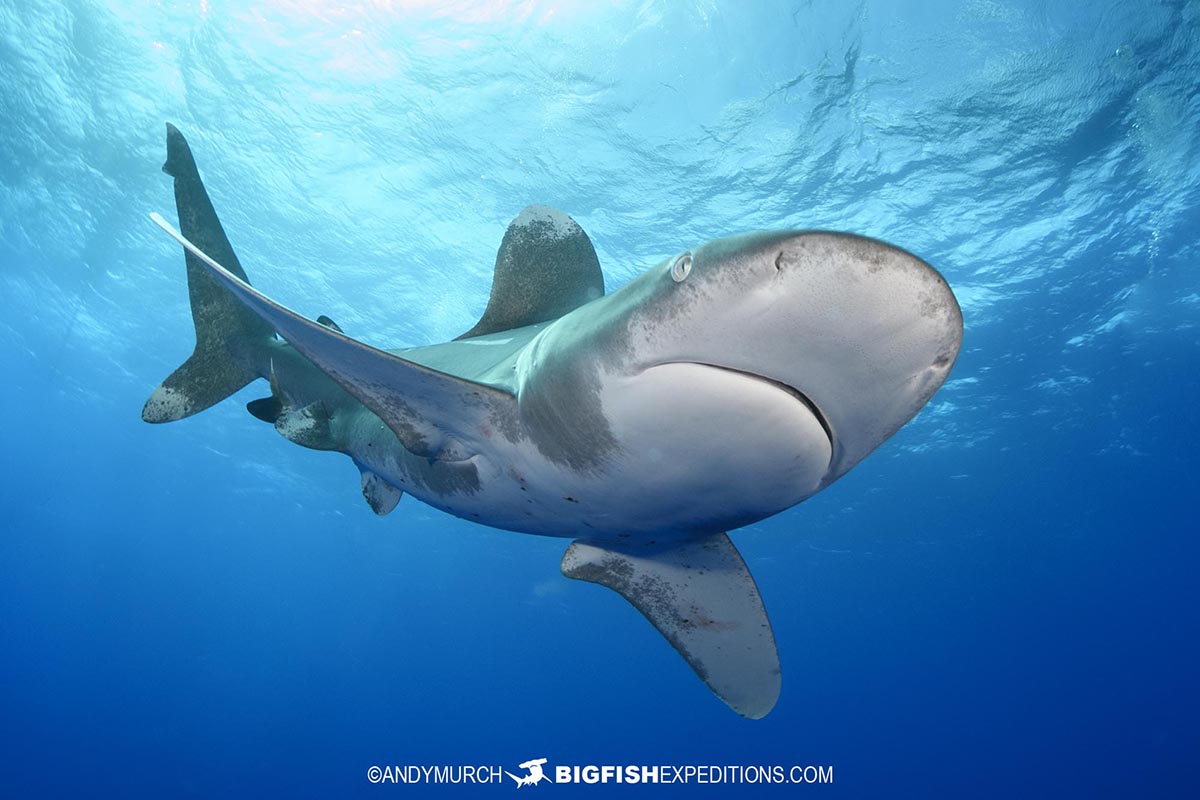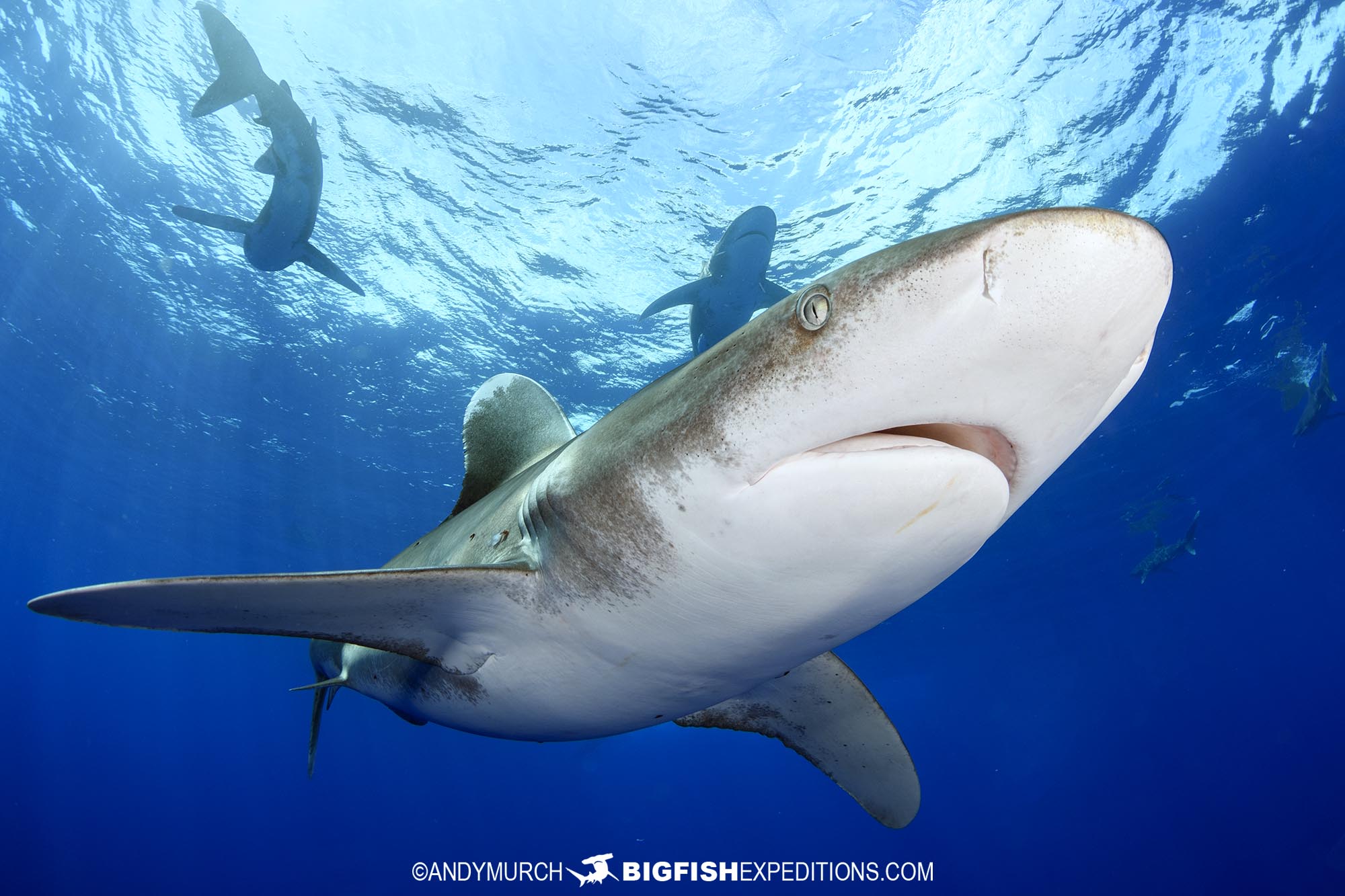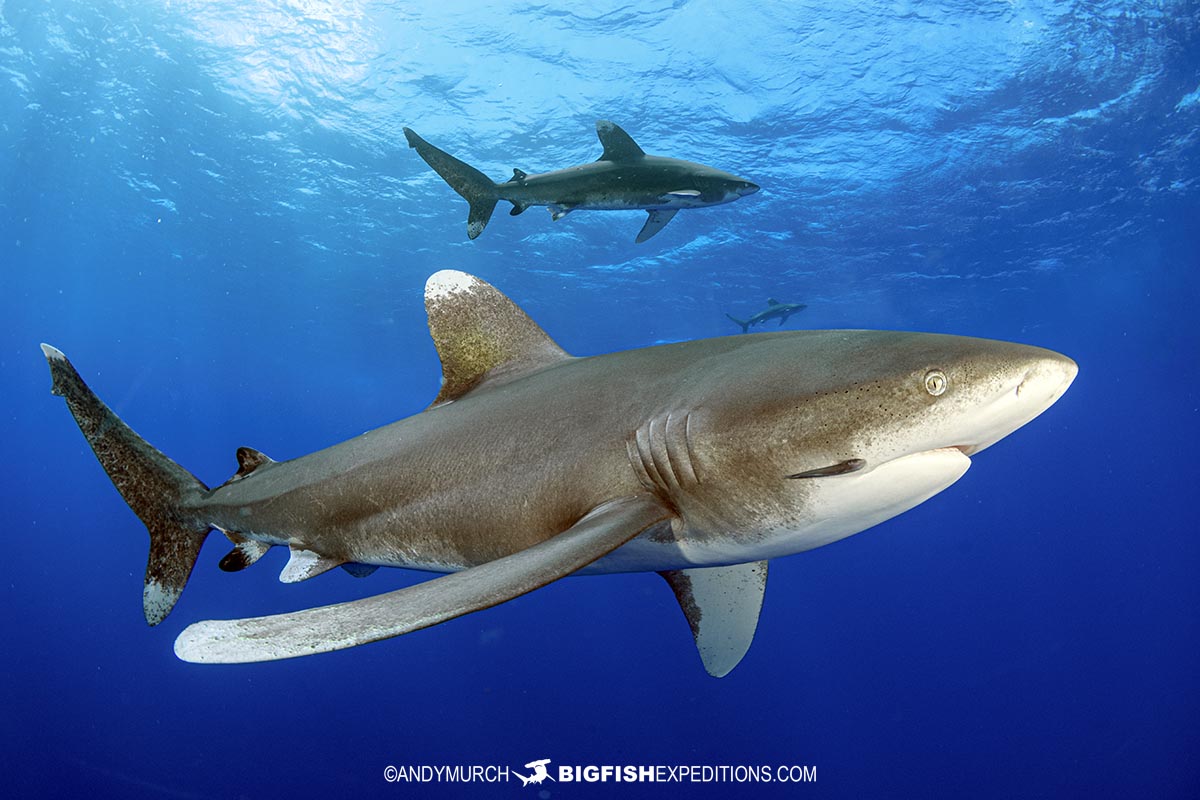
Another Great Oceanic Whitetip Shark Diving Trip
As usual, the oceanic whitetip sharks were abundant (21 sharks on our busiest dive) and the visibility at Cat Island was a beautiful azure blue; perfect conditions for world-class shark photography opportunities.
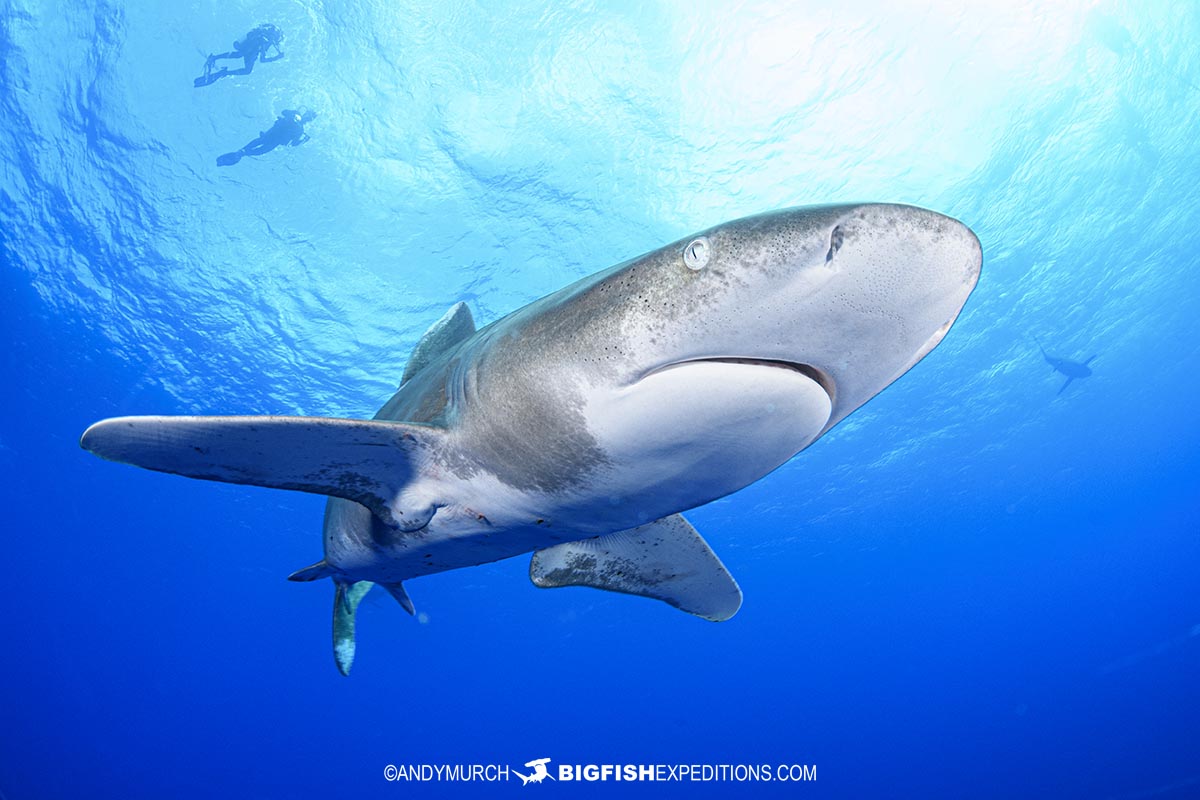
Not your average Reef Sharks
Each morning we motored out from Howe Sound; a protected bay on the south side of the island. We needed to reach deep water because Oceanic Whitetip Sharks are open ocean predators that rarely stray onto the reef. It was a little windy so we wanted to stay close to shore where we were sheltered by the island. In most places that would have presented a problem, but Cat Island is located on the exposed eastern edge of the Bahamas, where the shallow Caribbean Sea plunges into the deep North Atlantic. Just a few hundred meters from shore, the depth plummets to 3000ft; the perfect environment for attracting oceanic whitetips.
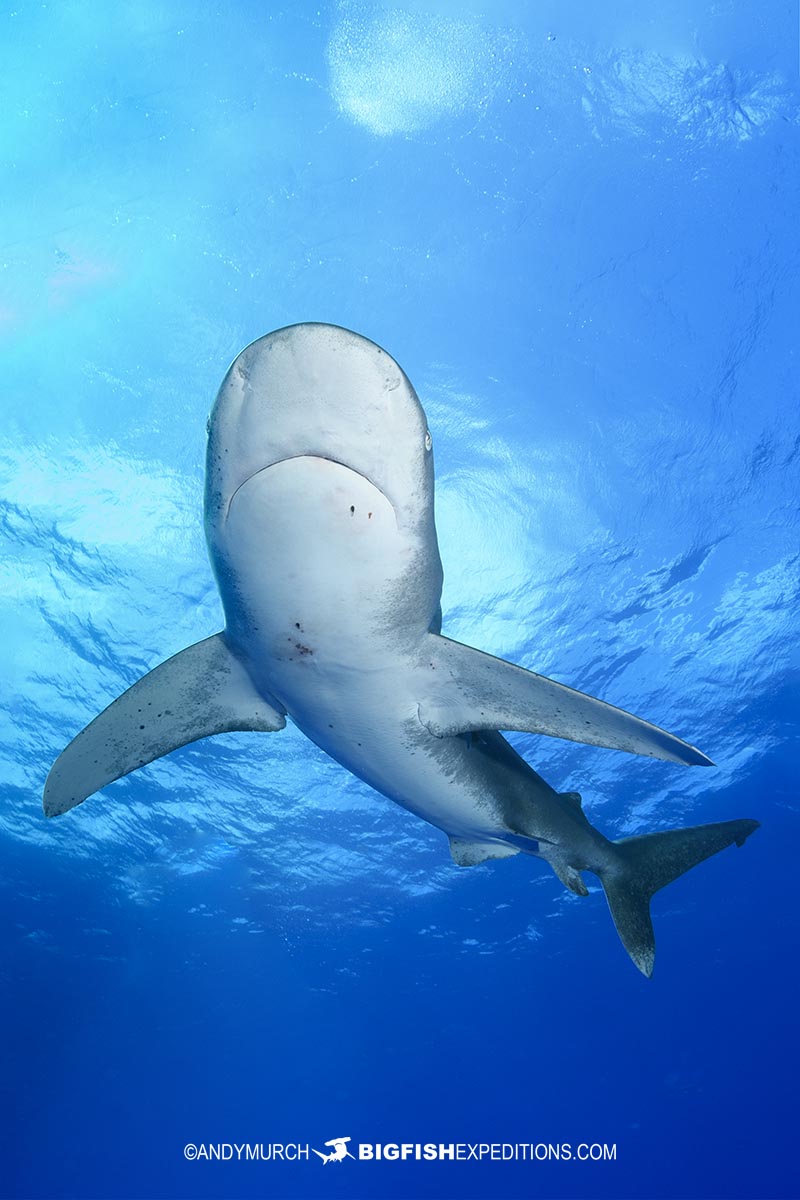
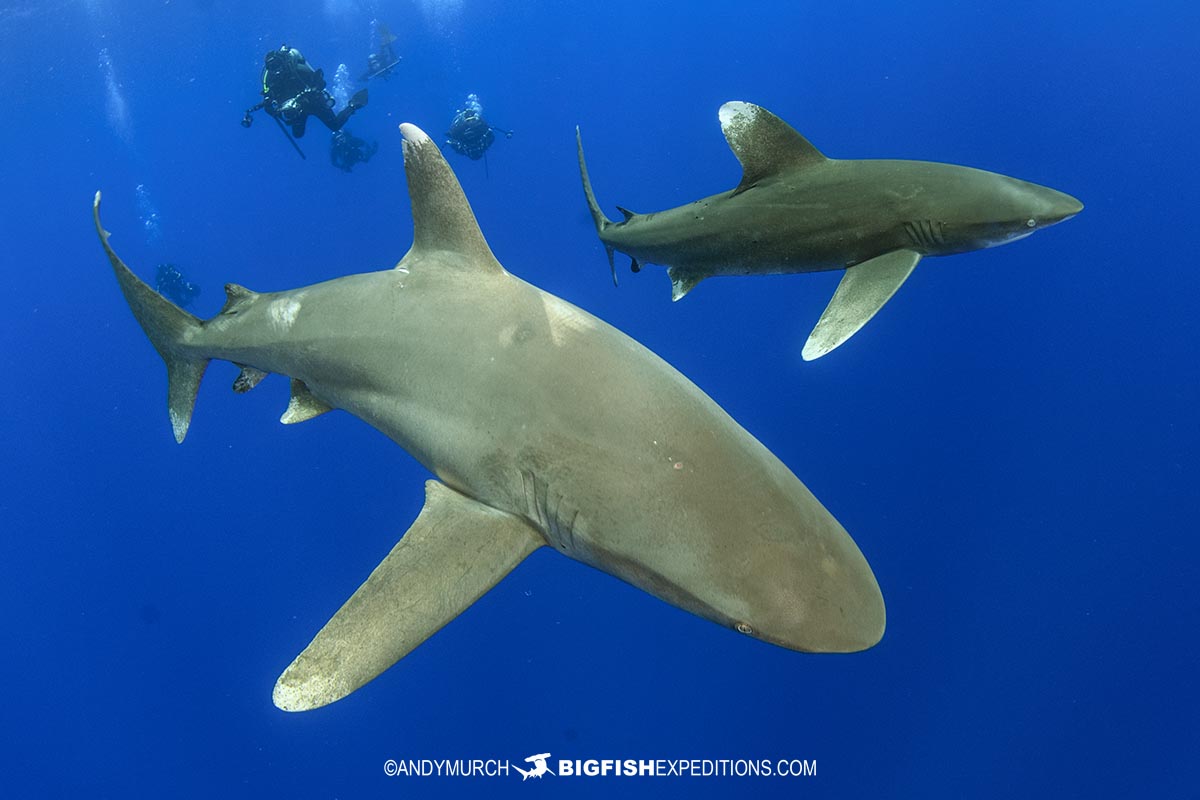
Cat Island Shark Diving Logistics
Cat Island has a sport fishing resort and a few small hotels. If you’re a fiercely independent traveller, you could probably arrange some reef diving here, but the locals don’t offer shark dives, let alone chumming for Oceanic Whitetip Sharks out in the blue! Consequently, for our oceanic trip, we chartered a boat from a far away island and moved it from one side of the Bahamas to the other. It was a bit of a logistical challenge but worth it for the fantastic shark encounters.
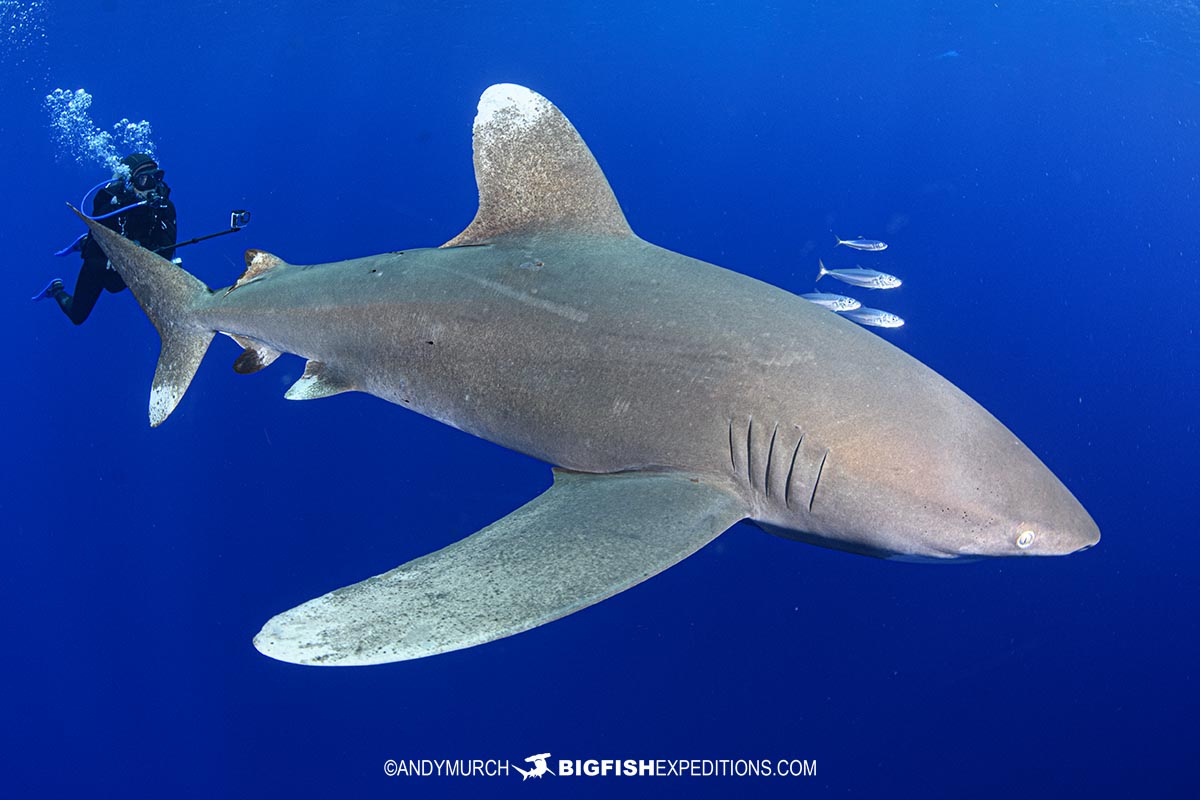
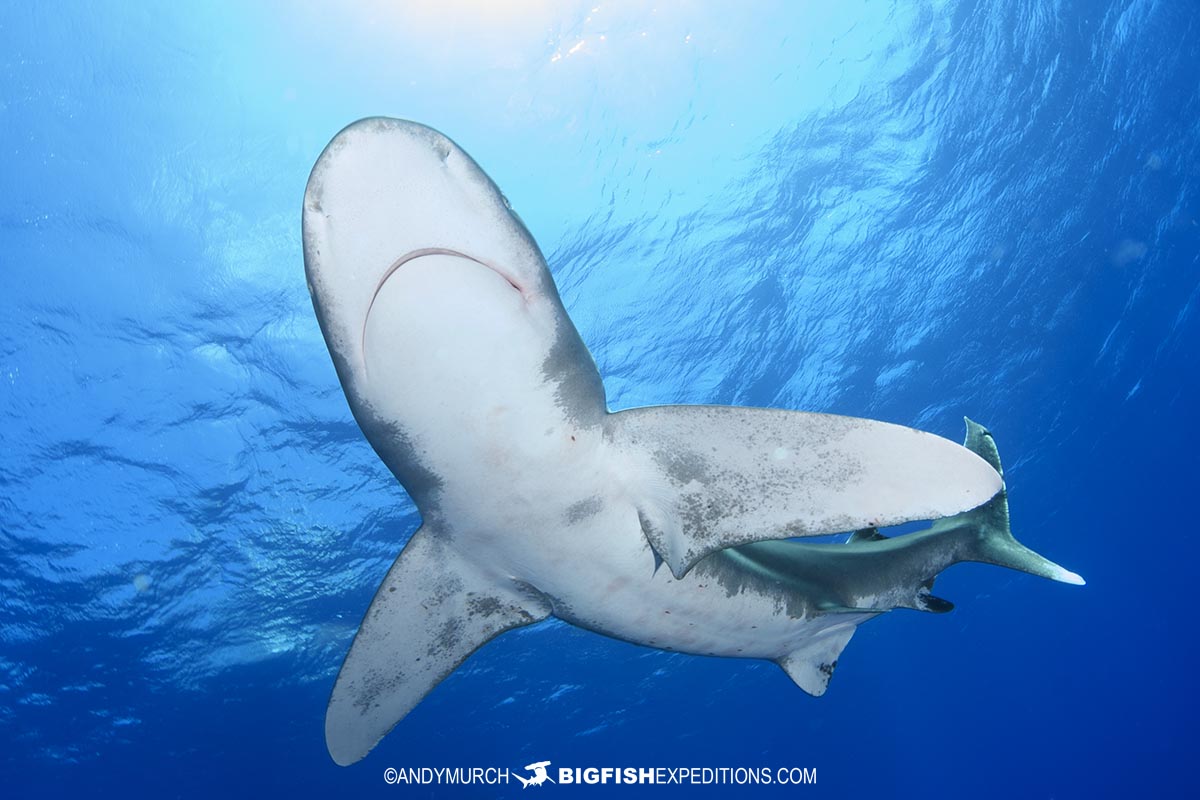
Pavlovian Sharks
Unlike Tiger Beach and other shark diving hotspots in the Bahamas, the oceanic whitetip sharks at Cat Island are not used to divers showing up with free handouts, but they are used to sport fishing boats.
For decades, Cat Island has been a sport fishing hotspot where well-healed fishermen try their luck at catching big marlin, dorado, tuna, and wahoo.
As soon as the whitetip sharks hear a sport fishing boat revving its engines, they know this means they have a fish hooked and the sharks race over to see if they can snatch it off the line before the boat lands it. So rather than throwing lots of chum in the water which would get the sharks too excited to dive with, we suspend a single bait crate and then we rev our engines as if we’re reeling in a fish. It works every time!
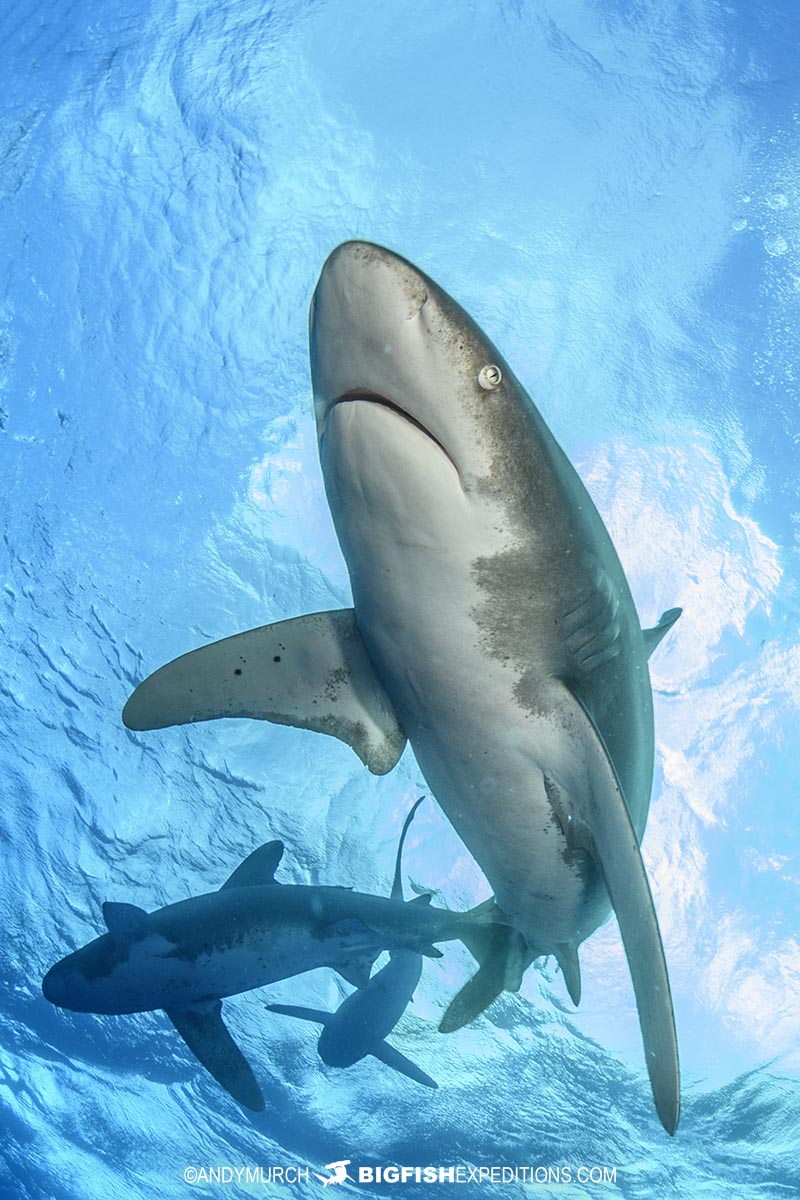
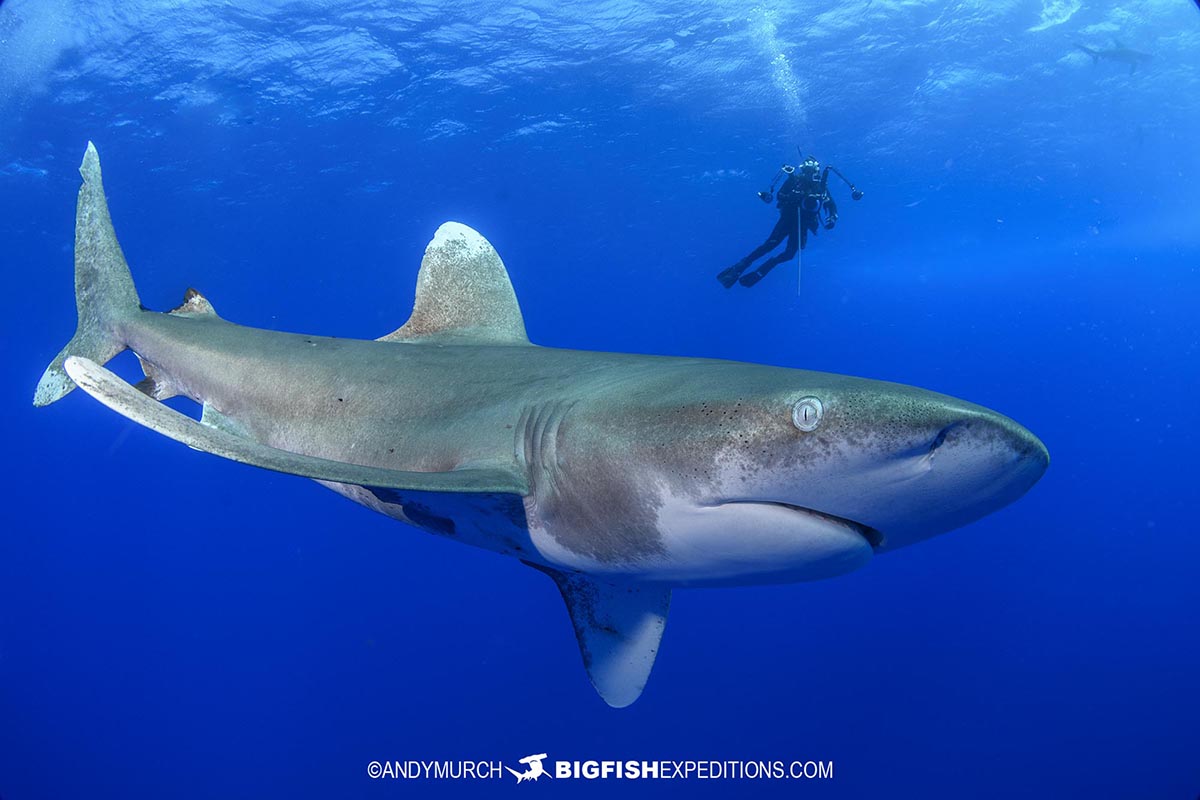
Shallow Dives in Deep Water
Everyday, the sharks arrived within a few minutes, at which point we lowered the bait crate to about 8m below the surface, tied a buoy to it, and let it drift away. If we had left the crate tied to the ship, once we were in the water we would not be able to keep up with it as the wind would pull the boat away.
With our system, when we’re ready to dive, the boat circles back to the buoy and we jump in and descend. Even if there is a really strong current, you can’t really feel it because bait crate, divers, and current are all moving together. It works perfectly.
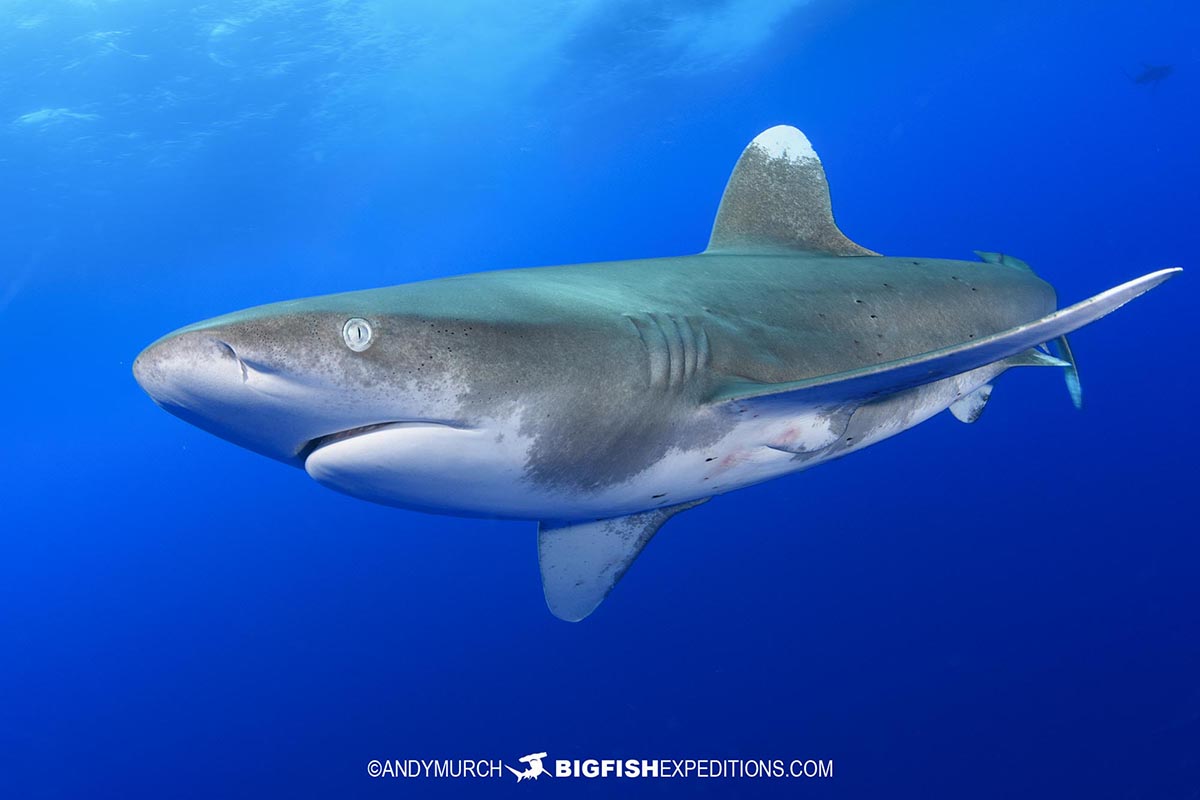
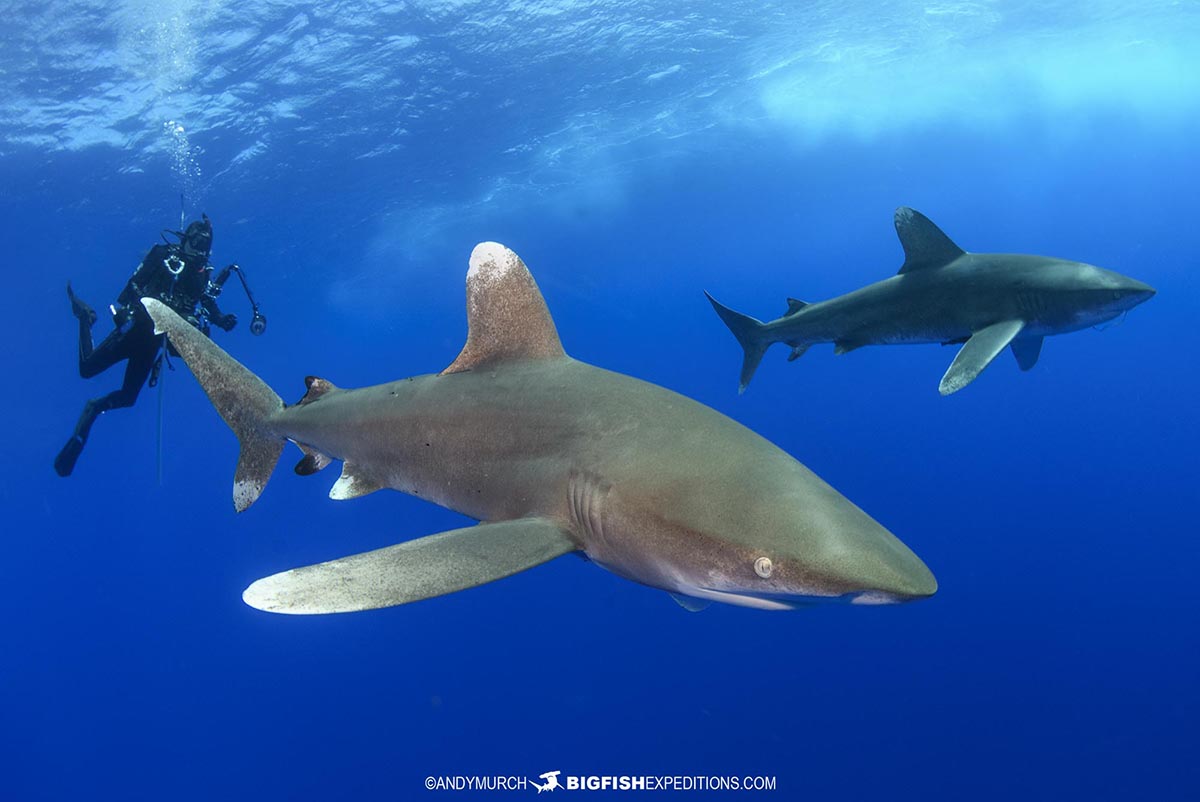
Well Behaved Sharks
Oceanic Whitetip Sharks make perfect photo subjects because they’re bold enough to get really close to the camera for great shark portraits, but docile enough to dive with, unless there is too much chum in the water. We are extremely careful about how much stimulant we use in order to keep the sharks interested but not agitated.
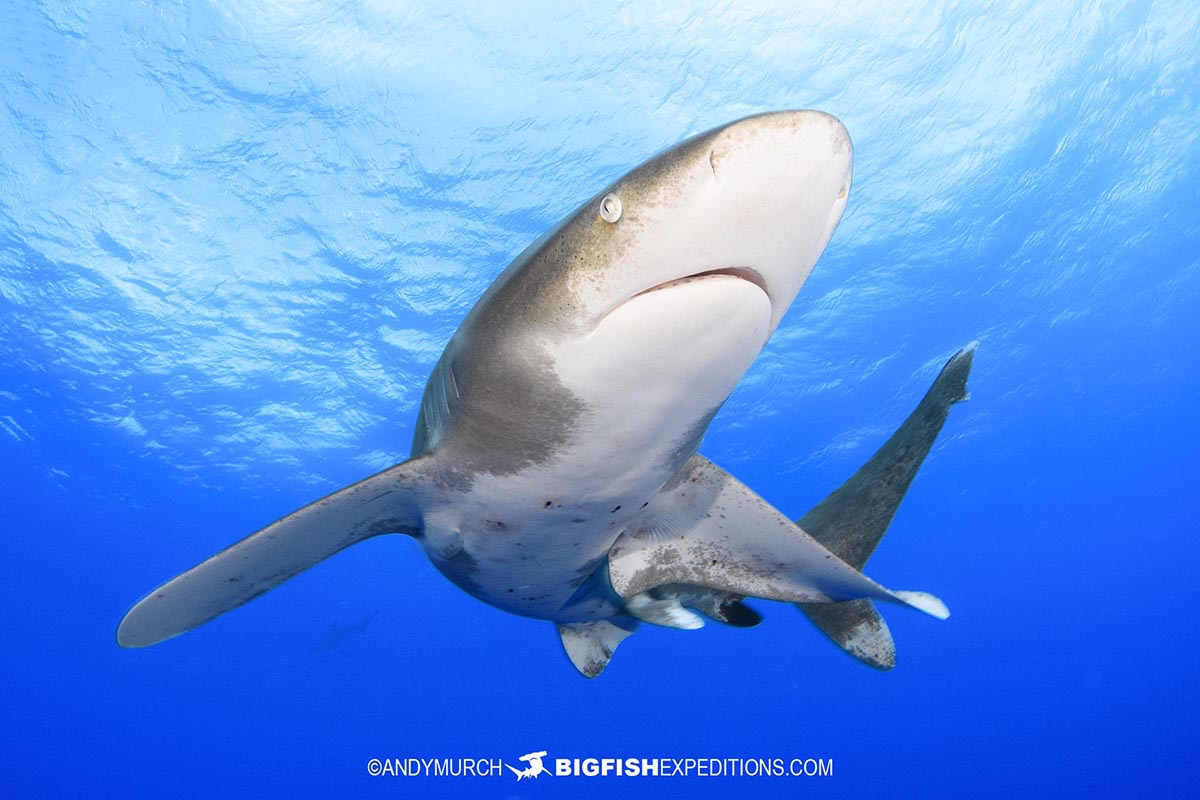
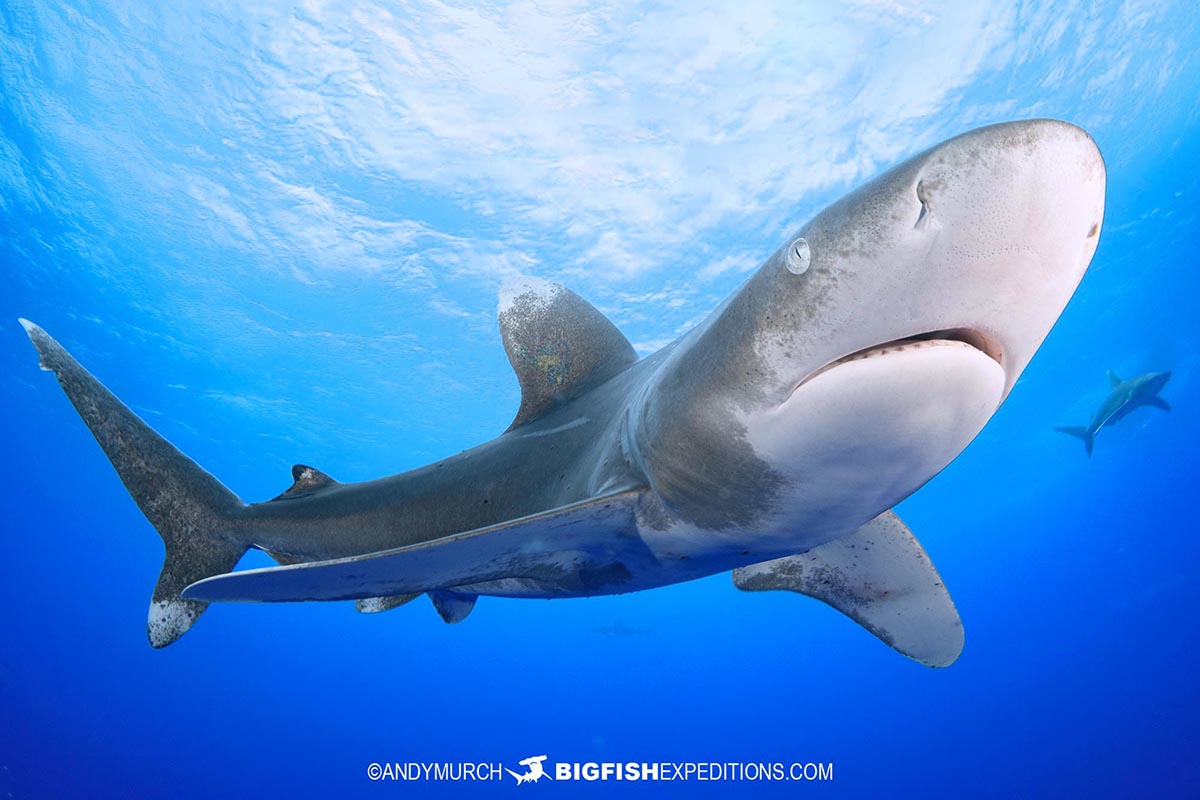
Shark Photography
You don’t have to be a photographer to enjoy our shark trips, but photographers definitely find our expeditions especially rewarding.
Each shark has its own unique photography challenges. With oceanic whitetips, the biggest challenge is lighting. Unlike most requiem sharks, their yellowish skin does not reflect much light so you have to get really close before your strobes have any effect. If you don’t light them up, oceanic whitetips take on a greenish hue underwater.
Once you get close enough, its all about strobe position because you want to throw as much light at the sharks back as possible without blowing out the white of its underbelly and snout. Fortunately the countershading on oceanic whitetips starts very low on their flanks, so there isn’t much white visible from their sides. Inevitably, their whitetipped fins get a little over exposed under heavy flash, but some of this can be corrected in post.
In my opinion, its better to light the shark’s yellow skin correctly and deal with the blown out whites, than to take home images of green looking sharks and try to turn them yellow in post. The latest version of Photoshop is great for recovering blown out whites but still not so good at warming up green sharks.
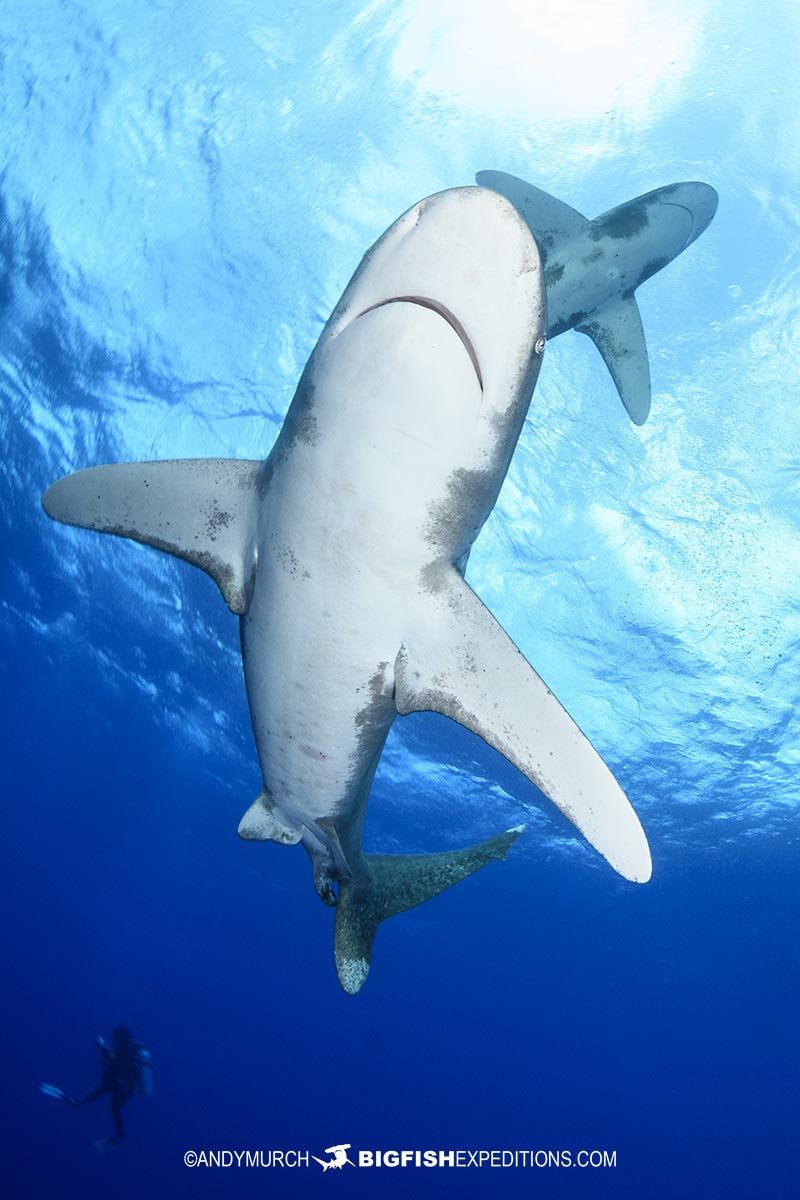
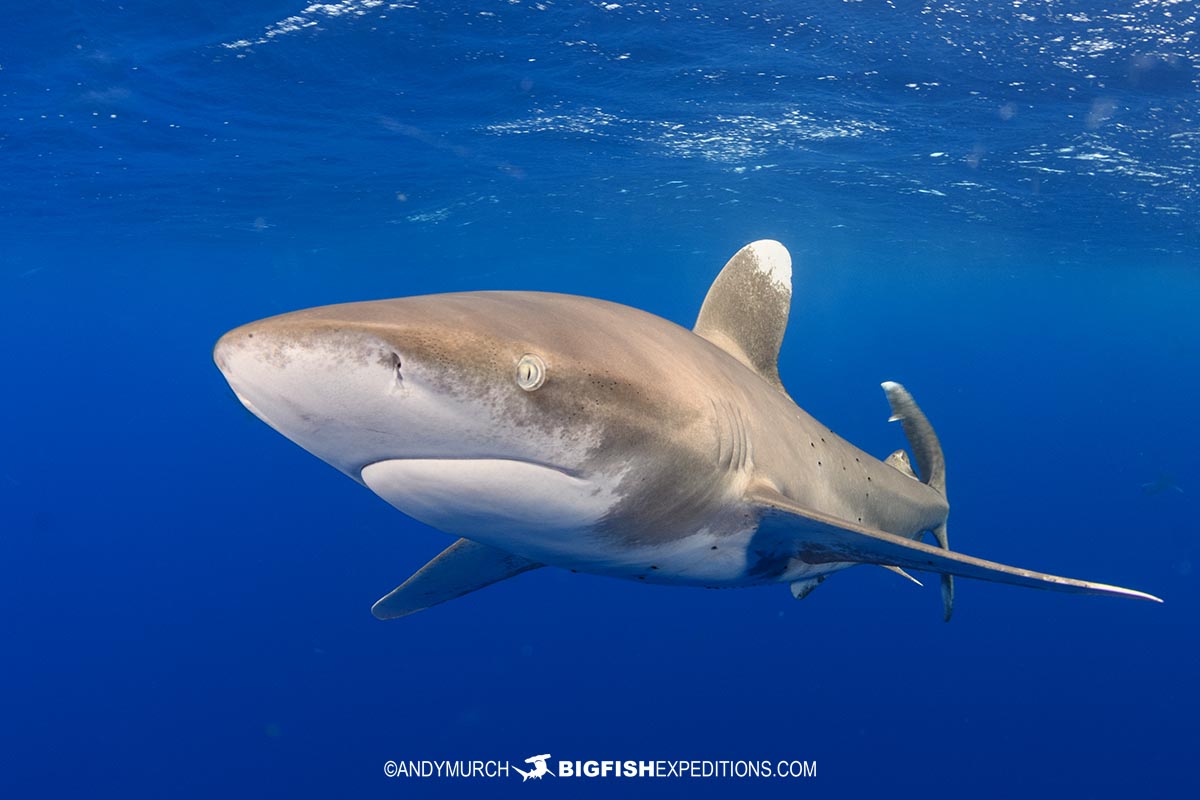
Sharks of the Marine Desert
Like temperate water blue sharks, oceanic whitetips inhabit the marine desert far from shore where the food supply on the seafloor is too deep and cold to reach. Food is extremely scarce in the open ocean, so it is not surprising that both these species tend to stick around when there is even a hint of a potential meal. This means that the sharks you see at the beginning of the day are likely to still be there when you’re heading back to shore at the end of the day. As the minutes tick by, more and more sharks arrive and very few of them leave. This is why we managed to accumulate 21 sharks by the end of our final dive. I tried to capture as many sharks as possible in a single frame but they were all around us so I never managed to shoot more than eleven at once. You had to be there to really appreciate the spectacle of so many oceanic whitetips swimming around in one spot.

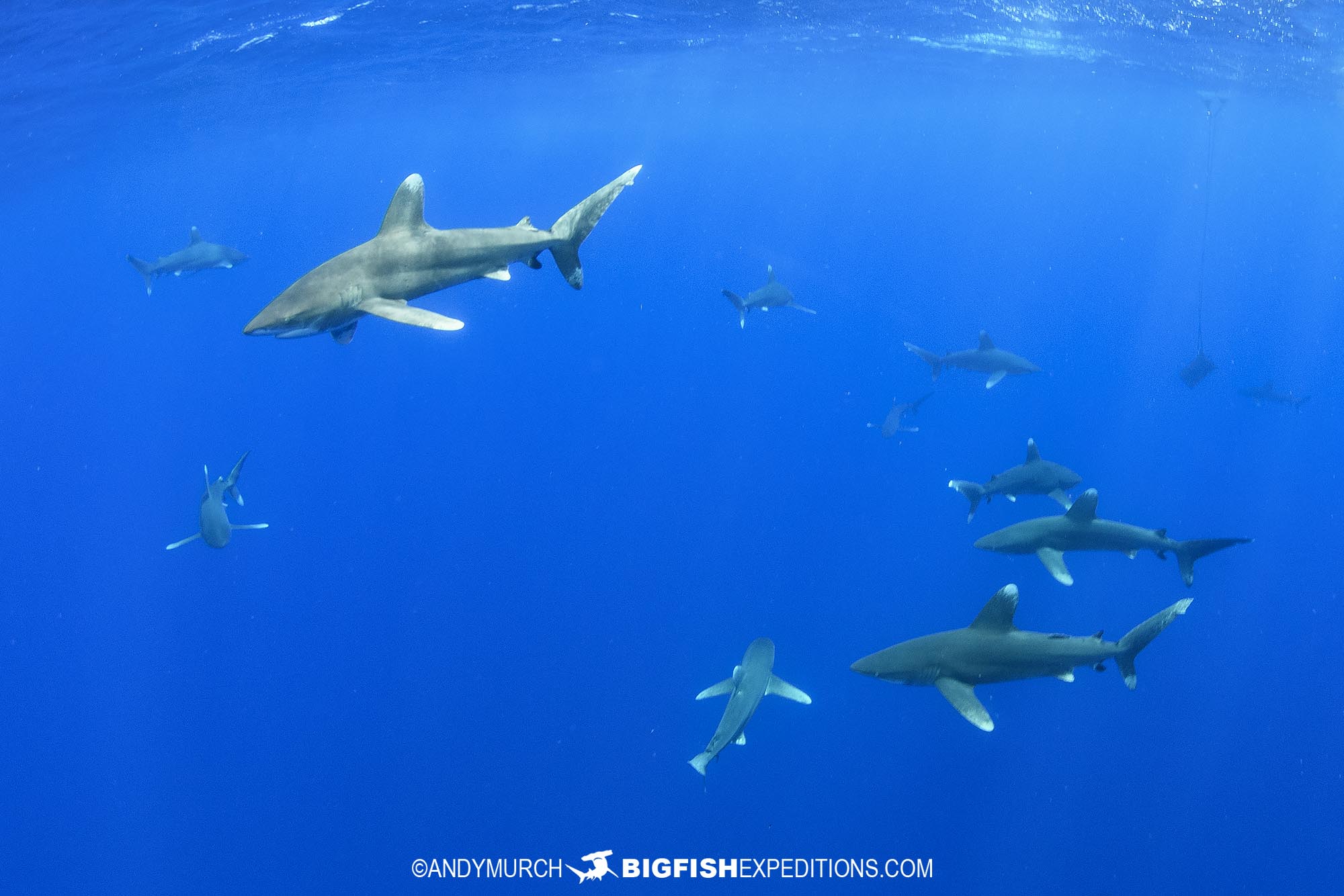
Other Shark Species
Our shark dives at Cat Island are always dominated by oceanic whitetip sharks, but we sometimes see other species in the mix. If we’re drifting very close to the reef, Caribbean reef sharks sometimes catch the scent and swim out to the bait box, but more often we see silkies or duskies which are more at home in the open ocean. This year, we had a solitary dusky.
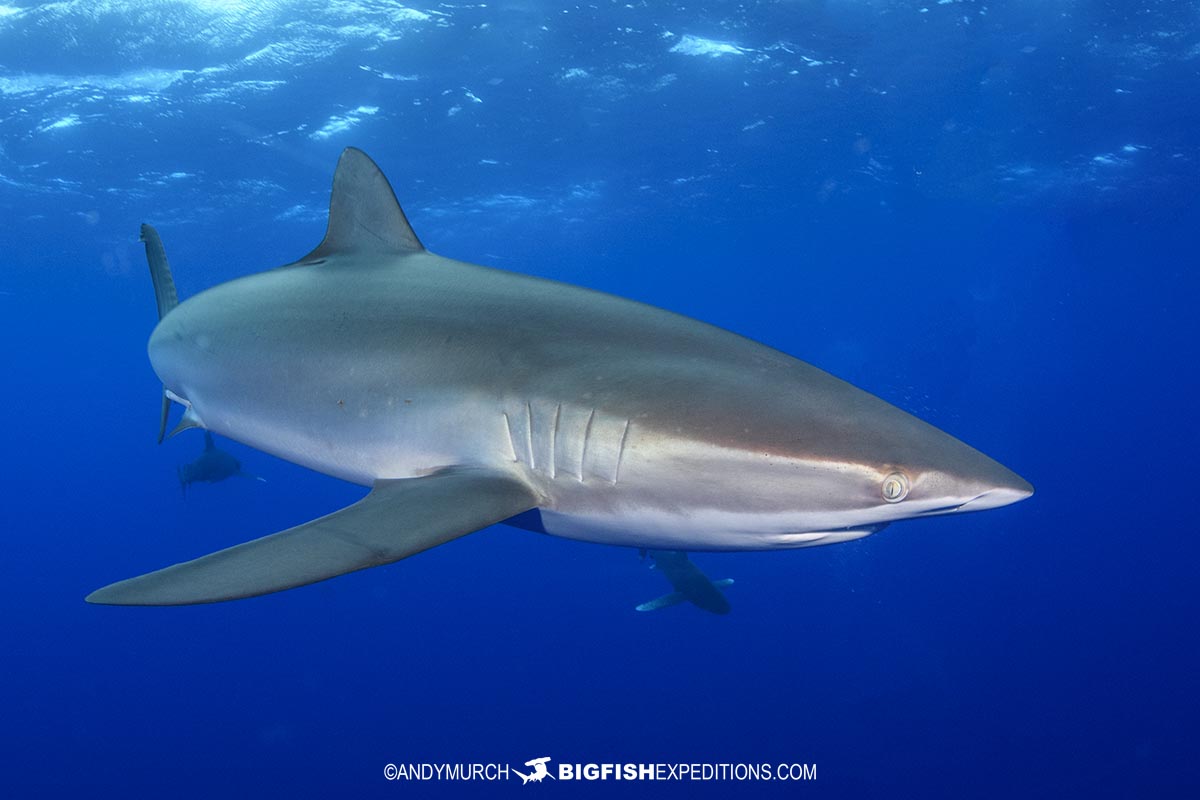
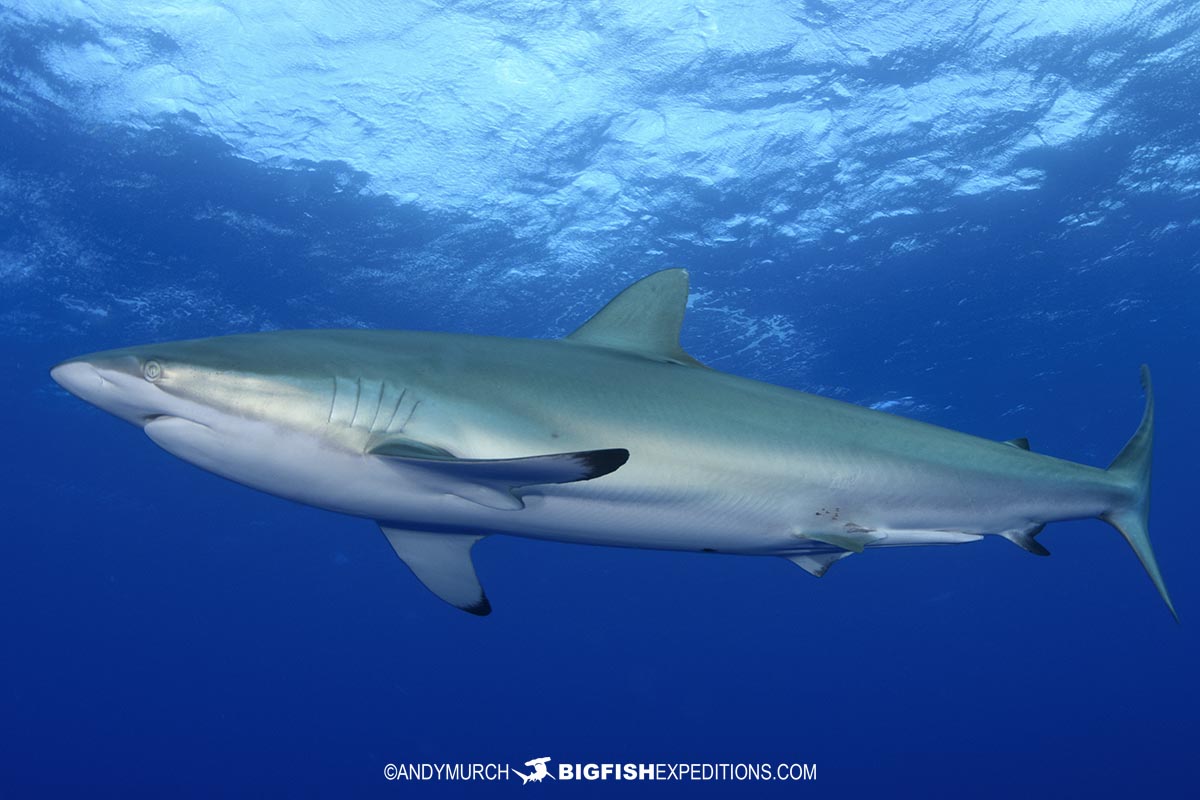
The Ultimate Bahamas Shark Diving Expedition
This year was our final dedicated oceanic whitetip shark diving trip – at least for a while. Because, starting in April 2026, we’ve added a brand new, 11 night liveaboard trip that will include shark dives at Tiger Beach, Nassau, Blue Hole, The Exumas, and of course Oceanic Whitetips at Cat Island. On this trip you will have a chance to dive with and photograph all of the iconic species that can be seen in the Bahamas including Tiger sharks, bulls, hammers, reef sharks, nurse sharks, lemons, blacknose sharks, duskies, silkies, and oceanic whitetip sharks. This fantastic adventure is only open to seven divers so if you would like to join me, please let me know as soon as possible! The Ultimate Bahamas Shark Diving Safari
